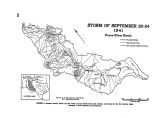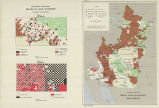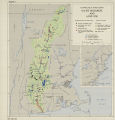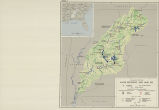| OCR Text |
Show Chapter 1 Regional Character and Problems1 The Connecticut River has served man well in the last 300 years of its history. A broad highway, it carried missionaries, trappers, soldiers, and set- tlers by canoe and small boat until modem com- merce began. Its salmon, shad, and other fish fed early settlers, and today its trout and bass provide sport to many a city dweller. Its rapids furnished power to picturesque water wheels that ground the early white man's grain. It furnished mechanical power for the beginnings of manufacturing enter- prise and today its rapids spin the turbines that power industries and supply light to homes and streets. For decades its channels have been handy means of waste disposal for industry and city alike; yet the Connecticut and its tributaries also have had to furnish potable water to homes and usable water to sensitive industrial processes. In part because of its long service to man, the Connecticut Basin today presents many problems. Some of them stem from its early settlement; more have appeared as the basin has been densely occu- 1 The original draft of this study was prepared during 1950 by the Committee on River Program Analysis of the Commission. The following persons served on the com- mittee, participated in the planning or review of the report, and contributed data to it: George Adkins, Federal Power Commission. James Bowman, Tennessee Valley Authority. Raymond H. Davis, Soil Conservation Service, Depart- ment of Agriculture. S. H. Gale, Corps of Engineers, Department of the Army. Paul Haney, Public Health Service. Carl Izzard, Bureau of Public Roads, Department of Commerce. E. N. Munns, Forest Service, Department of Agriculture. Wesley F. Restall, Corps of Engineers, Department of the Army. Kenneth W. Ross, Federal Power Commission. Victor Roterus, Department of Commerce. pied. Others grow out of the use man has made of its water resources and some from his abuse of them. Although the basin is a favored part of New England, many of its problems are also those of the region as a whole. They are the problems of a modest natural endowment of resources, long occu- pance of the area, and well-established traditions. The Land and Climate The watershed of the Connecticut River is the largest distinct geographic unit in New England and drains parts of four States: New Hampshire, Vermont, Massachusetts, and Connecticut. It is about 280 miles long, with a maximum width in the middle portion of only 62 miles, and is less than 50 miles wide throughout most of its length. Its total area is 11,260 square miles, of which 115 are in Canada. R. F. Stellar, Corps of Engineers, Department of the Army. George E. Tomlinson, Bureau of Reclamation, Depart- ment of the Interior. Frank L. Weaver, Federal Power Commission. Wesley Calef, President's Water Resources Policy Commission, committee secretary. Edward A. Ackerman, President's Water Resources Policy Commission, committee chairman. This study is based on information available between May and October 1950, including special basin reports submitted to the Commission by interested Federal agen- cies. Following preparation of the original draft by the Committee on River Program Analysis, the study was edited and revised by Edward A. Ackerman, John C. Beebe, John M. Carmody, Patricia Howse, E. N. Munns, and Evelyn S. Myers. Individual committee members or the agencies where they are employed therefore may or may not be in agreement with particular conclusions here presented. 911610-51- -32 467 |


























































































































































































































































































































































































































































































































































































































































































































































































































































